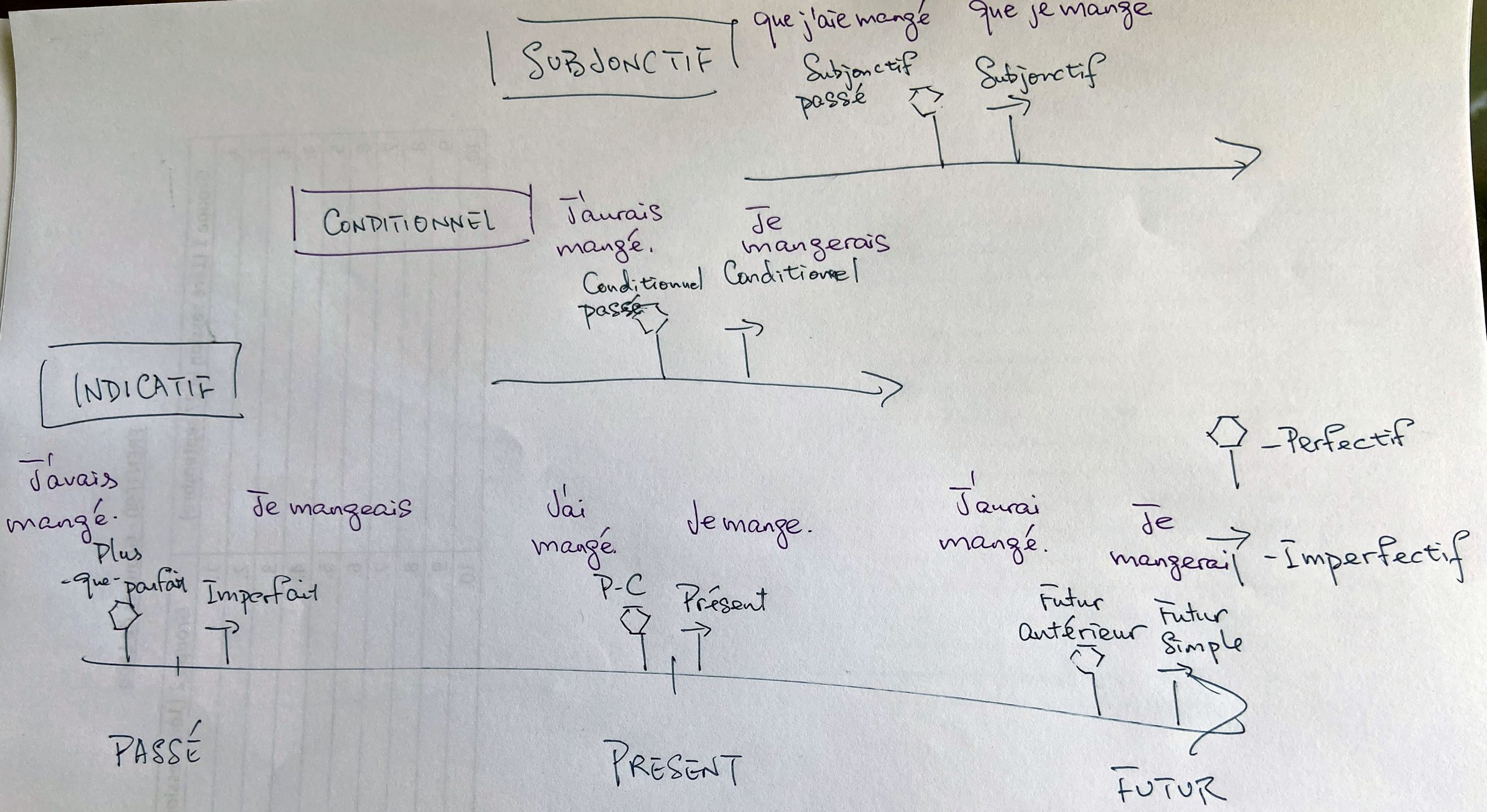Teaching French Perfective and Imperfective Tenses
Most French grammar textbooks and curricula treat the passé composé and imparfait as two tenses that describe past actions with different aspects: passé composé describes completed or instantaneous actions, whereas imparfait describes continuous or habitual actions. Although I wouldn’t call this a “misconception”, we are missing the point that there is pair of perfective and imperfective tenses in each timeframe. Passé composé is the present-perfective; the present tense is the present-imperfective; plus-que-parfait is the past-perfective; imparfait is the past-imperfective; futur antérieur is the future-perfective; futur-simple is the future-imperfective. This distinction also exists in conditional. At the end of my French grammar courses, after having taught the tenses by following the textbook and curricula set by the university, I often present this overview of how the tenses related to one another. By breaking the tenses into “Timeframe” and “Perfective-Imperfective”, students often tells me that they have this “ah-ha” moment where everything becomes that much clearer to them. I even draw a little diagram with the past-present-future, and where each pair of perfective-imperfective tenses is located.
TweetExample for "Teaching French Perfective and Imperfective Tenses":
https://bank.ecampusontario.ca/wp-content/uploads/2021/09/EOTeachingBadge_FrenchTenses-scaled.jpg

